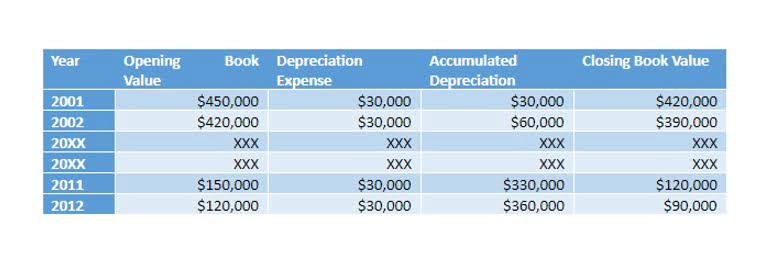Double Entry System of Accounting Basic Rules and Examples

If at any point this equation is out of balance, that means the bookkeeper has made a mistake somewhere along the way. Because the accounts are set up to check each transaction to be sure it balances out, errors will be flagged to accountants quickly, before the error produces subsequent errors in a domino effect. Additionally, the nature of the account structure makes it easier to trace back through entries to find out where an error originated. The total amount of the transactions in each case must balance out, ensuring that all dollars are accounted for. Debits are typically noted on the left side of the ledger, while credits are typically noted on the right side. A batch of postings may include a large number of debits and credits, but the total of the debits must always equal the total of credits.
Debit receives the benefit, credit gives the benefit
- The primary disadvantage of double-entry accounting is that it’s a more complex system.
- The other one will be forwarded to the tax department (to make sure that income taxes are paid on time).
- Managing cash flow well is another big win with double-entry bookkeeping.
- In double-entry bookkeeping, every transaction affects at least two accounts.
- If a business buys raw materials by paying cash, it will lead to an increase in inventory (asset) while reducing cash capital (another asset).
Given his calling, Pacioli must have been a man of considerable education and wide-ranging interests. His work has stood the test of time because the fundamental principles are timeless. The founding father of the double-entry system was a Franciscan monk called Luca Pacioli. double entry accounting meaning He did not invent it, but in 1493 he wrote down the principles of the system used by himself and others. A second popular mnemonic is DEA-LER, where DEA represents Dividend, Expenses, Assets for Debit increases, and Liabilities, Equity, Revenue for Credit increases.
The accounting equation
When setting up the software, a company would configure its generic chart of accounts to reflect the actual accounts already in use by the business. Credits to one account must equal debits to another to keep the equation in balance. Accountants use debit and credit entries to record transactions to each account, and each of the accounts in this equation show on a company’s balance sheet. The list is split into two columns, with debit balances placed in the left hand column and credit balances placed in the right hand column.
Double Entry Keeps the Accounting Equation in Balance
- Double-entry provides a more complete, three-dimensional view of your finances than the single-entry method ever could.
- But if the company pays out cash (” outflow”), the cash account is credited.
- Therefore, if you buy a new factory or if you buy some postage stamps, the appropriate accounts will be debited.
- Because you only record one entry per transaction, you can’t see how that transaction impacts other areas of your business, which results in less comprehensive financial reporting.
- By leveraging data analytics tools, accountants can sift through large volumes of financial data to identify unusual patterns or transactions that deviate from the norm.
- The automation of routine tasks, such as invoicing and expense tracking, reduces the risk of human error and frees up valuable time for accountants to focus on strategic financial planning.
Implementing a double-entry system of accounting will allow you to put your financial statements to better use so that you can measure your financial health and spot errors quickly. A bookkeeper reviews source documents—like receipts, invoices, and bank statements—and uses those documents to post accounting transactions. If a business ships a product to a customer, for example, the bookkeeper will use the customer invoice to record revenue for the sale and to post an accounts receivable entry for the amount owed. When you generate a balance sheet in double-entry bookkeeping, your liabilities and equity (net worth or “capital”) must equal assets.

Using double-entry accounting to ensure accurate record-keeping
- Both Cash and Fixed Asset are asset accounts, so a credit represents a decrease in the account balance while a debit represents an increase.
- If the accounting entries are recorded without error, the aggregate balance of all accounts having Debit balances will be equal to the aggregate balance of all accounts having Credit balances.
- A chart of accounts is a handy link between daily business activities and the five accounting buckets – assets, liabilities, equity, income and expenses.
- The necessary debit and credit entries are created for you, and you can run a trial balance report at the click of a button to see where your books are not balancing.
- Every time you make a transaction, it gets recorded in at least two places.
The main premise of double-entry accounting is that a company’s financial health is sufficient if its debits and credits remain balanced at all times. As trade expanded across Europe, the double-entry system spread, becoming the standard for businesses seeking to maintain accurate financial records. The method’s adoption was further propelled by the rise of joint-stock companies and the need for transparent financial reporting to shareholders. By the 17th century, double-entry accounting had become entrenched in the commercial practices of major European economies, including England and the Netherlands. This period also saw the development of more sophisticated accounting techniques, such as the use of trial balances and the preparation of financial statements, which enhanced the system’s utility.
- The double-entry system also requires that for all transactions, the amounts entered as debits must be equal to the amounts entered as credits.
- It also provides an accurate record of all transactions, which can help to reduce the risk of fraud.
- Single-entry accounting involves writing down all of your business’s transactions (revenues, expenses, payroll, etc.) in a single ledger.
- The Grouch Electronics company sells a $5,000 home entertainment installation to a client on credit.
- The purchase of $5,000 in Fixed Asset equipment appears in both the Cash account and Fixed Asset account since the transaction affects both of the accounts in double-entry accounting.
The concept of double-entry bookkeeping can date back to the Romans and early Medieval Middle Eastern civilizations, where simplified versions of the method can be found. Yes, double-entry bookkeeping requires at least two entries for every transaction. However, there may be more, depending on the complexity of the transaction. If your debit and credit accounts don’t match, then you know your numbers are off.

When all the accounts in a company’s books have been balanced, the result is a zero balance in each account. This is reflected in the books by debiting inventory and crediting accounts payable. Let’s take a look at the accounting equation to illustrate the double entry system. Here is the equation with examples of how debits and credit affect https://www.bookstime.com/ all of the accounts. Yes, the Generally Accepted Accounting Principles (GAAP) requires that businesses use double-entry bookkeeping in recording financial transactions. You would need to enter a $1,000 debit to increase your income statement “Technology” expense account and a $1,000 credit to decrease your balance sheet “Cash” account.
The double-entry accounting method has many advantages over the single-entry accounting method. First and foremost, it provides an organization with a complete understanding of its financial profile by noting how a transaction affects both credit and debit accounts. It also makes spotting errors easier, because if debits and credits do not match, then something is wrong. This is always the case except for when a business transaction only affects one side of the accounting equation. For example, if a restaurant purchases a new delivery vehicle for cash, the cash account is decreased by the cash disbursement and increased by the receipt of the new vehicle. This transaction does not affect the liability or equity accounts, but it does affect two different assets accounts.
Great! The Financial Professional Will Get Back To You Soon.

The debit entry increases the wood account and cash decreases with a credit so that the total change in assets equals zero. Liabilities remain unchanged at $0, and equity remains unchanged at $0. This is a simple journal entry because the entry posts one debit and one credit entry. The company should debit $5,000 from the wood – inventory account and credit $5,000 to the cash account. Double-entry accounting is the standardized method of recording every financial transaction in two different accounts. For each credit entered into a ledger there must also be a corresponding (and equal) debit.

